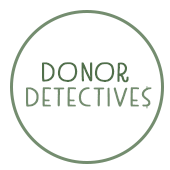Is the Third-Party Cookie Crumbling?


Donor Detectives Team
The third-party cookie has been an integral part of digital marketing targeting since the late 1990s. Google recently announced they will be delaying the phasing out of the third-party cookie from Chrome browsers by another year, from the initial timeline of beginning of 2022 to late 2023.
Now that browsers are phasing out this option, how should nonprofit organizations move forward to reach their donors? Let’s start with the basics!
So, What Are Cookies?
Cookies are small pieces of data that are used to identify you and are placed on the device used to access the website. There are two types of cookies:
First-party cookies: these are pieces of data that are on a website which allow you to stay logged into accounts on websites or remember specific personal settings.
Third-party cookies: these are the primary way digital marketers target you on other websites after viewing something on their website. When browsers or users block these, it prevents advertisers from knowing information about you that can create more highly targeted ads.
How to Prepare for a World Without Third-Party Cookies
- Continue building your organization’s first party data through email acquisition and other lead generating campaigns.
- Plan an annual email append to find your direct mail donors online.
- Stay up to date in tracking parameters across all digital media platforms.
With Google delaying their move to block third party cookies from Chrome by another year and Apple continuously rolling out new privacy policies, now is the best time to get your donor and email audience lists built before the data is no longer accessible to your nonprofit organization.
What will replace the third-party cookie is still unknown, however taking these steps can prepare you for future changes in the digital industry.